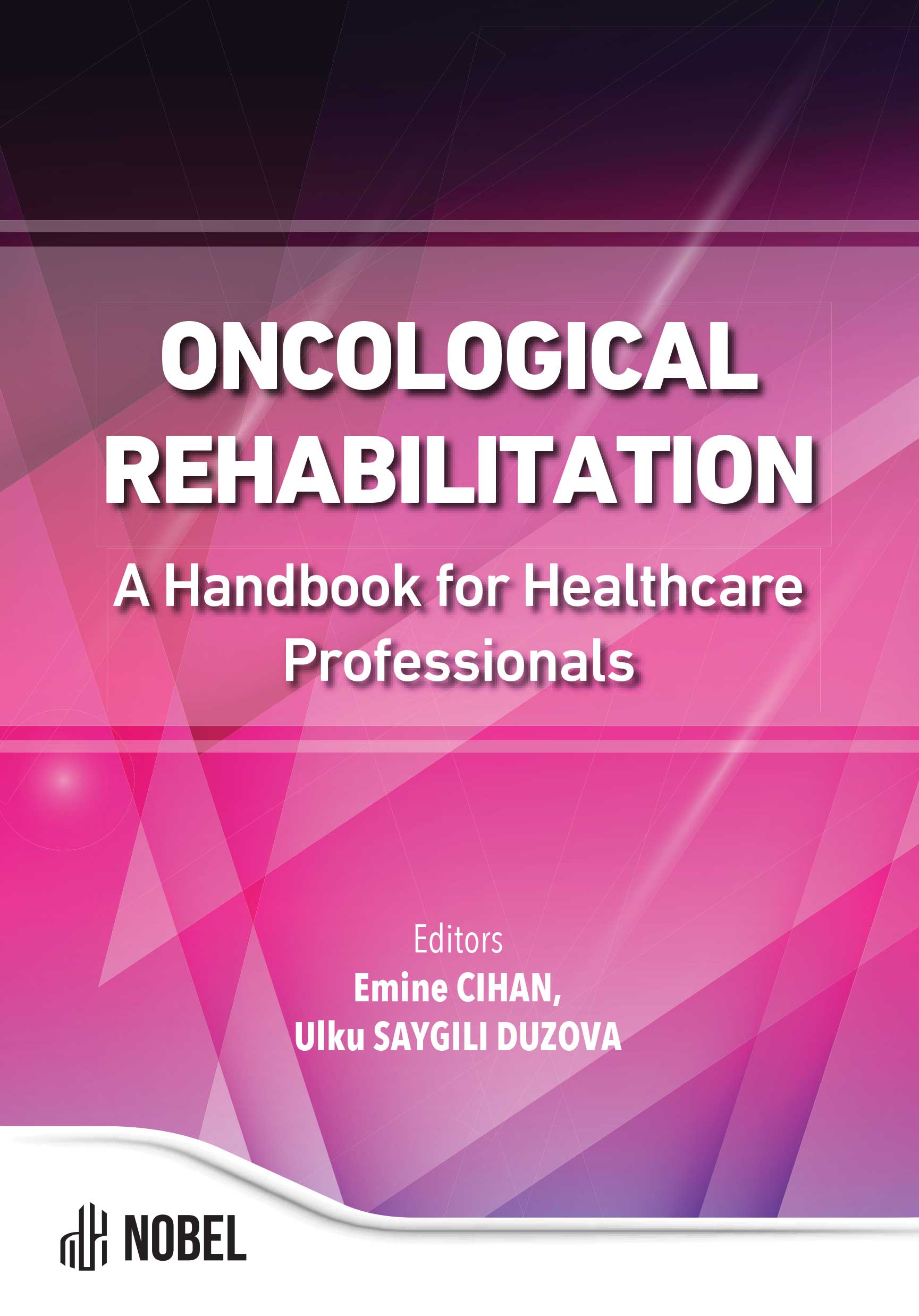Lymphedema Rehabilitaion in Cancer Patients
Cansu Sahbaz Pirincci (Author)
Release Date: 2024-03-07
The lymphatic system is responsible for the return of protein-rich interstitial fluid to the circulation and is also involved in the body’s defense and fat absorption. Due to damage to the lymphatic system or excessive production of lymph fluid in the body, the disease called lymphedema occurs. The type of lymphedema caused by genetic mutations [...]
Media Type
PDF
Buy from
Price may vary by retailers
| Work Type | Book Chapter |
|---|---|
| Published in | Oncological Rehabilitation a Handbook for Healthcare Professionals |
| First Page | 153 |
| Last Page | 176 |
| DOI | https://doi.org/10.69860/nobel.9786053358893.7 |
| ISBN | 978-605-335-889-3 (PDF) |
| Language | ENG |
| Page Count | 24 |
| Copyright Holder | Nobel Tıp Kitabevleri |
| License | https://nobelpub.com/publish-with-us/copyright-and-licensing |
Cansu Sahbaz Pirincci (Author)
Saglık Bilimleri Universty
https://orcid.org/0000-0002-3921-0721
3Dr. Cansu SAHBAZ PIRINCCI completed her undergraduate education in the Department of Physiotherapy and Rehabilitation at Başkent University, her master’s education at Dumlupınar/Pamukkale University, and her doctorate education at Ankara Yıldırım Beyazıt University. In addition to having 12 years of clinical experience, she has worked in the field of cancer rehabilitation/lymphedema for 6 of those years. She is currently serving as an assistant professor at the Gülhane Faculty of Physiotherapy and Rehabilitation at the University of Health Sciences.
Bakar, Y., Berdici, B., Şahin, N., & Pala, Ö. O. J. M. S. D. (2014). Lymphedema after breast cancer and its treatment. Meme Sağlığı Dergisi.
Boggon, R. P., & Palfrey, A. J. (1973). The microscopic anatomy of human lymphatic trunks. Journal of anatomy, 114(Pt 3), 389–405.
Bourgeois, P. (2015). Lymphoscintigraphy and other imaging methods. Lymphedema: Presentation, Diagnosis, and Treatment, 157-184
Brorson, H., Svensson, B., & Ohlin, K. (2015). Volume measurements and follow-up. Lymphedema: Presentation, diagnosis, and treatment, 115-122
Cihan, E., Yıldırım, N. Ü., Bilge, O., Bakar, Y., & Doral, M. (2021). Outcomes with additional manual lymphatic drainage to rehabilitation protocol in primary total knee arthroplasty patients: preliminary clinical results. Süleyman Demirel Üniversitesi Sağlık Bilimleri Dergisi, 12(3), 319-329.
Committee, E. (2020). The diagnosis and treatment of peripheral lymphedema: 2020 consensus document of the international society of lymphology. Lymphology, 53, 3-19.
da Silva Veiga, P. A. (2009). Health and medicine in ancient Egypt: magic and science. BAR Publishing.
Enyeart, J., Foxlee, C., Ramolete, D., & Wyatt, C. C. (2017). Lymphedema Assessments.
Fialka-Moser, V., Korpan, M., Varela, E., Ward, A., Gutenbrunner, C., Casillas, J. M., Delarque, A.,
Haesler, E. (2016). Evidence summary: Lymphoedema: Skin care. Wound Practice & Research: Journal of the Australian Wound Management Association, 24(4), 236-238.
Horning, K. M., & Guhde, J. (2007). Lymphedema: an under-treated problem. Medsurg nursing : official journal of the Academy of Medical-Surgical Nurses, 16(4), 221–228.
Leak L. V. (1976). The structure of lymphatic capillaries in lymph formation. Federation proceedings, 35(8), 1863–1871.
Leblebicier, M. A., Bakçepınar, G., & Cihan, E. Role of Decongestive Therapy For Lymphedema In A Patient After Liver Transplantation: A Case Report. Osmangazi Tıp Dergisi, 45(1), 130- 134.
Michelini, S., Failla, A., Moneta, G., & Cardone, M. (2011). Compression therapy in lymphatic insufficiency. In: Milano: Cizeta Medicali.
Michelini, S. (2010). Lymphedema etiology, epidemiology and clinical staging. Compression therapy in lymphatic Insufficiency. Milano: Cizeta-Medicali, 14-8.
Reger, M., Kutschan, S., Freuding, M., Schmidt, T., Josfeld, L., Huebner, J. J. J. o. C. R., & Oncology, C. (2022). Water therapies (hydrotherapy, balneotherapy or aqua therapy) for patients with cancer: a systematic review. 148(6), 1277-1297.
Rooke, T. W., & Felty, C. L. (2017). Lymphedema: Pathophysiology, classification, and clinical evaluation. In Handbook of Venous and Lymphatic Disorders (pp. 707-712). CRC Press.
Sacchi, G., Weber, E., Aglianò, M., Raffaelli, N., & Comparini, L. (1997). The structure of superficial lymphatics in the human thigh: precollectors. The Anatomical record, 247(1), 53–62.
| onix_3.0::thoth | Thoth ONIX 3.0 |
|---|---|
| onix_3.0::project_muse | Project MUSE ONIX 3.0 |
| onix_3.0::oapen | OAPEN ONIX 3.0 |
| onix_3.0::jstor | JSTOR ONIX 3.0 |
| onix_3.0::google_books | Google Books ONIX 3.0 |
| onix_3.0::overdrive | OverDrive ONIX 3.0 |
| onix_2.1::ebsco_host | EBSCO Host ONIX 2.1 |
| csv::thoth | Thoth CSV |
| json::thoth | Thoth JSON |
| kbart::oclc | OCLC KBART |
| bibtex::thoth | Thoth BibTeX |
| doideposit::crossref | CrossRef DOI deposit |
| onix_2.1::proquest_ebrary | ProQuest Ebrary ONIX 2.1 |
| marc21record::thoth | Thoth MARC 21 Record |
| marc21markup::thoth | Thoth MARC 21 Markup |
| marc21xml::thoth | Thoth MARC 21 XML |

